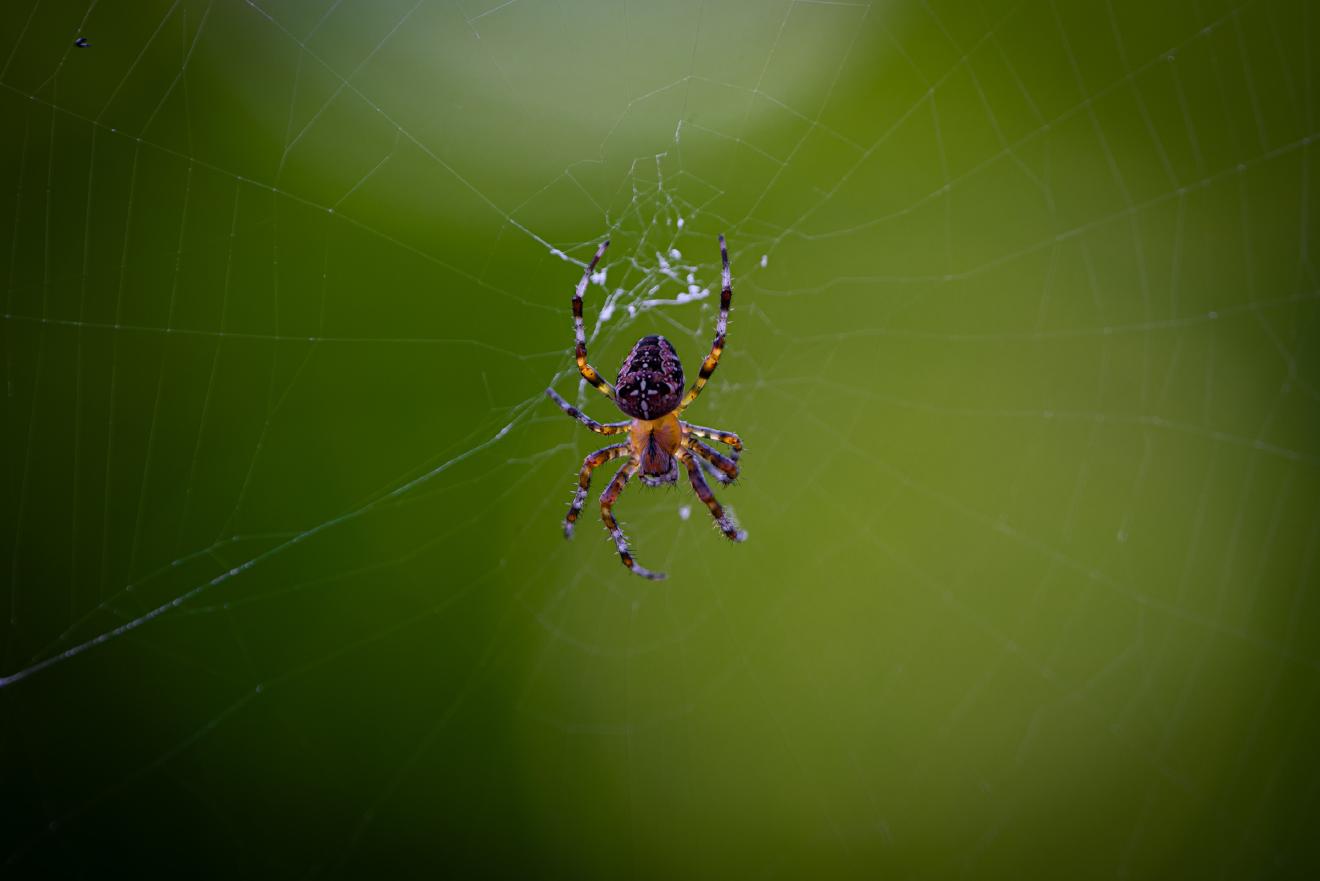Cross Orbweaver
species of suborder “Typical Spiders“
1 species
The A. diadematus spider is found in Europe and North America, ranging from southern Canada to Mexico. They have mottled white markings on their abdomen and come in various colors, with females being larger than males. Orb-weaver spiders like A. diadematus build orb webs to catch prey, using specialized legs for spinning. They can be cannibalistic, with females sometimes eating males after mating. These spiders are reclusive and only bite humans if provoked, responding to disturbances by vibrating rapidly in their web.

Range#
A. diadematus has a holarctic distribution throughout Europe and across North America, from southern Canada to Mexico, and from British Columbia to Newfoundland.
Size and markings#
Individual spiders’ colourings can range from extremely light yellow to very dark grey, but all A. diadematus spiders have mottled white markings across the dorsal abdomen, with four or more segments forming a cross. The markings are formed in cells filled with guanine, which is a byproduct of protein metabolism.Adult females range in length from 6.5 to 20 mm (0.26 to 0.79 in), while males range from 5.5 to 13 mm (0.22 to 0.51 in). Occasionally, the female will eat the male directly after mating. (See video below.)
Specialization#
The legs of orb-weaver spiders are specialized for spinning orb webs. The webs are built by the larger females, which hang head down in the center of the web or remain hidden in nearby foliage, with one claw hooked to a signal line connected to the main orb, waiting for a disturbance to signal the arrival of prey. Prey is then quickly wrapped in silk and bitten, and the prey may hang on the web to be stored for later consumption. The initial bite serves to paralyze the prey and minimize the danger of the spider herself being stung or bitten, and the enzymes thus injected serve to begin liquefaction of the prey’s internal structures. Alongside the use of the web to capture other prey, the spiders are also cannibals and prey on each other, but this only happens just before, during, or just after sexual activity. They attack based on their size, sexual experience, and hunger levels. A. diadematus is a reclusive creature and only bites humans if cornered or otherwise provoked. It responds to a disturbance by vibrating rapidly in its web until it becomes a blur, a reaction that is assumed to confuse potential predators.
External links#
European orb-weavers Roggenbuck, Helma; Pekár, Stano; Schneider, Jutta M. (April 2011). “Sexual cannibalism in the European garden spider Araneus diadematus: the roles of female hunger and mate size dimorphism”. Animal Behaviour. 81 (4): 749–755. doi:10.1016/j.anbehav.2011.01.005. S2CID 54240443.
The A. diadematus spider is found in Europe and North America, ranging from southern Canada to Mexico. They have mottled white markings on their abdomen and come in various colors, with females being larger than males. Orb-weaver spiders like A. diadematus build orb webs to catch prey, using specialized legs for spinning. They can be cannibalistic, with females sometimes eating males after mating. These spiders are reclusive and only bite humans if provoked, responding to disturbances by vibrating rapidly in their web.
Ancestry Graph
Further Information
Copyright

